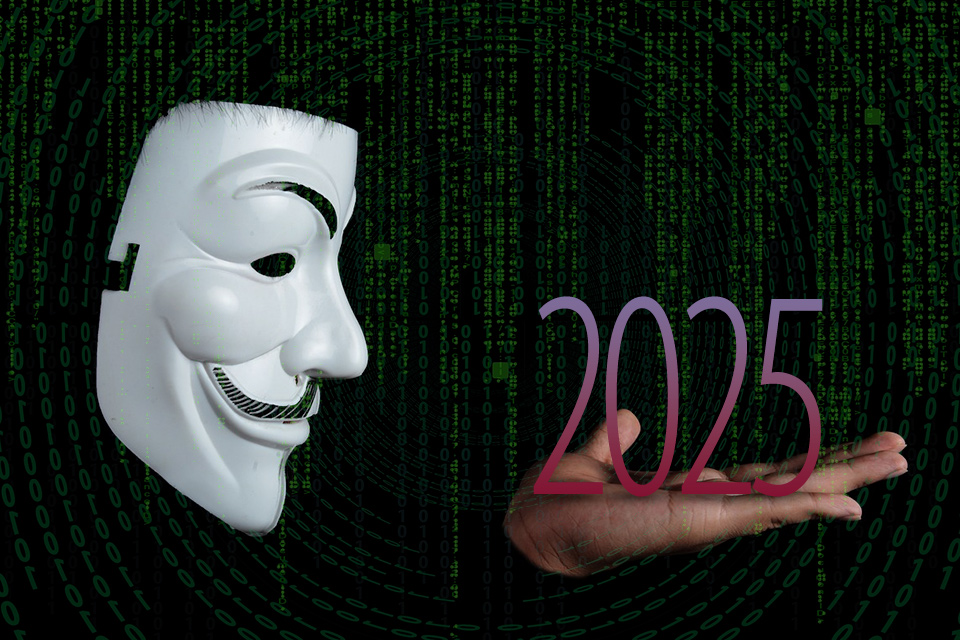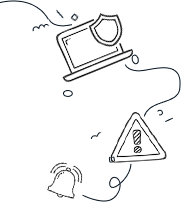Introduction
Welcome to 2025, folks! It feels like just yesterday we were worried about the Y2K bug — where did the years go? Time flies when you’re having fun (or dodging cybercriminals)! You might be wondering, how are we already here?
Meanwhile, those sneaky cybercriminals didn’t take a holiday break. Nope! They’re hard at work dreaming up fancy new ways to swipe your personal data, like tech-savvy raccoons rummaging through the digital trash.
But fear not! Our brave security experts are waging a constant war against these data-thieving rascals. Let’s take a look at the shenanigans that await in 2025 and how you can guard your crown jewels — a.k.a. your personal information!
Advanced Cyber Attacks
If you thought you could take a break because of the passing years, think again! AI-driven cyber attacks are all the rage, like the latest TikTok dance, but much less fun. Advanced versions of malware and ransomware can now be concocted faster than your favorite cocktail on a Friday night.
While we rely on technology to help us find hidden threats (because no one wants a surprise “guess who’s invading your network” party), criminals have upped their game too. They’re crafting more devious phishing emails and sneaky malware attacks like digital ninjas. And let’s not forget the dramatic rise in supply chain attacks, just in case you thought your favorite delivery app was safe.
To fend off these high-tech attacks, it’s time to embrace advanced protective strategies! Think of it like having a guard dog for your online life. Consider using Dark Web Monitoring to sniff out any unsavory characters hanging around your personal information. Automated alerts can come to your rescue faster than you can say “breach,” and incident response procedures are your superhero sidekick when suspicious behavior rears its head.
Supply Chain and IoT Vulnerabilities
Ah, the classic tale of “trusted relationships turned sour.” Cybercriminals are honing in on supply chains like a hawk eyeing its prey. They’re exploiting access to your smartphone cloud storage, which might as well be a treasure chest of your data. Want to breach thousands of innocent accounts? Just breach the cloud distributor — it’s like the ultimate hack-a-thon!
As if that weren’t enough, the Internet of Things (IoT) is expanding our attack surface like a buff bodybuilder. Many of these smart gadgets come with about as much security as a paper bag. People continue to treat their smart home devices like that semi-annual New Year’s resolution—keeping the default settings like it’s 1999! That’s music to hackers’ ears because these easier targets provide a golden ticket to exploit the bigger, more complex connected networks.
Cloud Security and Decentralized Cybersecurity
As businesses head to the cloud, securing these fluffy environments is now top priority. Misconfigurations and lax access controls can make your sensitive data easier to breach than a piñata at a birthday party!
Now, when companies decide to let different departments manage their own cybersecurity, it can lead to a hodgepodge of inconsistent security measures. It’s like a potluck dinner where some people bring gourmet dishes and others show up with bags of chips. Decentralization: where not everyone is following the same culinary… um, I mean cybersecurity rules. The result? Weak spots, and nobody wants weak spots!
To tackle these vulnerabilities, organizations must be flexible and ensure they’re managing risks across every department like a seasoned event planner. That’s why you might notice a bit more “red tape” around here. Sure, you might have to sign in twice, but hey, it’s to guard your precious data!
Human Factor and Regulatory Compliance
Let’s talk about the messy human side of this equation. Human error is still the reigning champion of cybersecurity risks, responsible for a whopping 95% of all breaches! And what’s the culprit? Phishing attacks, weak passwords, and that dreaded insider threat, which could be your coworker — who knew Bob was so reckless?
Your company must also stay on top of evolving regulatory requirements like GDPR and HIPAA to keep the data police happy and avoid expensive penalties. Compliance means YOU need some training to keep everything above board. Depending on where you work, even your customers from diverse regions might have pesky security standards you need to follow. Just think of it as making sure your cookies bake evenly, regardless of the oven!
Conclusion
As we embrace the shiny new world of technology this year, let’s not forget to keep our eyes peeled for lurking threats. Before you jump onto the latest tech trends, think about how they might affect your cybersecurity. And don’t forget your privacy settings — it’s like wearing sunscreen.
Memorize your workplace Incident Response Plan — it’s as crucial as knowing the way to your local coffee shop. If any emergencies occur, you’ll be ready to spring into action like a superhero ready to save the day (or at least your data).
By understanding what’s coming in the cyber-threat landscape, you’re not just protecting your private data; you’re boosting your superhero status in the digital world!





